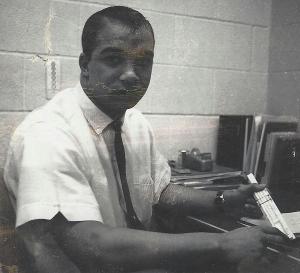Inaugural program to debut with A Raisin in the Sun.
This year, as part of its Summer Reading Program, Fenwick High School debuts “One Book, One Fenwick.” For the first time since formal, summer reading began at Fenwick, the Catholic high school is announcing one shared book to read among all students – as well as those within the greater Fenwick community who wish to participate. The selection, A Raisin in the Sun, actually is a play written by the late Lorraine Hansberry (1930-1965).
“We tip our hats to Chicago Public Library’s ‘One Book, One Chicago’ for the inspiration,” said John Schoeph, English Department Chair and a 1995 alumnus of Fenwick. The “One Book, One Fenwick” program seeks to unite all students and members of the Fenwick community through a shared book, Schoeph and his English Dept. colleagues explained. “We envision the program offering platforms and avenues for book-related information, discussions and learning.”

While activities are taking place across disciplines in Fenwick classrooms, Fenwick’s English Dept. hopes to see parents, alumni and friends of the school get involved through a variety of offerings related to the book. “It is our hope that a common text can foster intellectual interaction and friendly discourse between and among the many groups that make up Fenwick’s vast family and network,” the committee proclaimed. A few of the experiences in the works include multiple book chats open to the wider Fenwick family, in-class discussions across the subjects, performances of passages by Theater Fundamentals students, and an all-school assembly celebrating “One Book” in late September.
Committee member and fellow English Teacher Kyle Perry, a 2001 Fenwick graduate, noted: “We look forward to the opportunity of improving students’ literacy while also building a stronger sense of community here at Fenwick.”
Inaugural title choice
Poet Langston Hughes penned what has now become a celebrated question in his 1951 poem, “Harlem:” “What happens to a dream deferred?” Among the possible answers is that it might dry up “like a raisin in the sun.” Hansberry’s 1959 play follows the Youngers, an African-American family, as they seek the American Dream in Chicago. When the Youngers inherit a $10,000 insurance check (equivalent to more than $90,000 today), they pursue wishes for entrepreneurship, education and, especially, a house of their own in Clybourne Park, a white neighborhood. Through A Raisin in the Sun’s engagement with topics and themes from across the American literary canon, including assimilation, class, race, gender, hope, pride and family relationships, the play addresses Hughes’ question: “What happens to a dream deferred?”

“We have enjoyed an incredibly successful summer reading program for years,” Schoeph continued. “Our students read and tend to enjoy the selections. We didn’t want to grow complacent with our success but sought to find a way to bolster the program, to inject it with something exciting and unifying. After exchanging several ideas, we decided on the ‘One Book, One Fenwick’ model. Witnessing the entire English Department enthusiastic about this new dimension to our summer reading program warmed my heart as chair.”
Students can find full details on their summer reading assignments, including course-specific texts assigned in addition to A Raisin in the Sun, here on the Fenwick website.






 School records dating back 64 years confirm that alumnus Richard Cochrane ’59 blazed a trail as Fenwick’s very first African-American student and graduate. Originally from Maywood, IL, Mr. Cochrane now lives in the sunny Southwest. In high school, he was active in student government (class treasurer and secretary) and played football and basketball (captain).
School records dating back 64 years confirm that alumnus Richard Cochrane ’59 blazed a trail as Fenwick’s very first African-American student and graduate. Originally from Maywood, IL, Mr. Cochrane now lives in the sunny Southwest. In high school, he was active in student government (class treasurer and secretary) and played football and basketball (captain).
